Dushanbe; Tajikistan’s Soviet-style capital
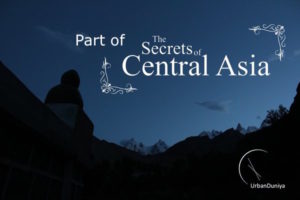 Fearghas O’Beara is a fellow traveller and friend of mine who I met in Iran many years ago. As fate would have it we coincidentally bumped into each other in Islamabad Airport a year later as we both embarked on our separate trips on the Silk Road. Fearghas is a keen traveller and keeps some amazing notes while he travels, so naturally when it came to the Secrets of Central Asia I asked him he would like to volunteer his experiences from Tajikistan!
Fearghas O’Beara is a fellow traveller and friend of mine who I met in Iran many years ago. As fate would have it we coincidentally bumped into each other in Islamabad Airport a year later as we both embarked on our separate trips on the Silk Road. Fearghas is a keen traveller and keeps some amazing notes while he travels, so naturally when it came to the Secrets of Central Asia I asked him he would like to volunteer his experiences from Tajikistan!
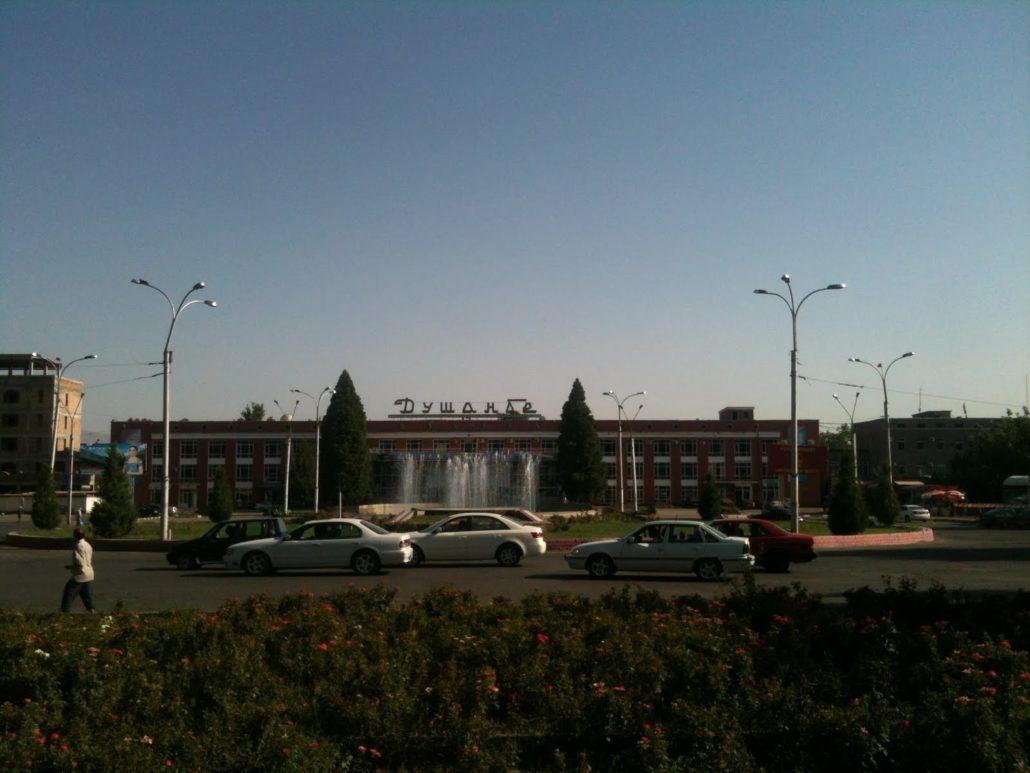
Railway Station, Dushanbe, Tajikistan
If you are searching for a nostalgia trip as to how the Soviet Union looked and functioned in its heyday, then I strongly recommend you head for Tajikistan before time catches up with it. Always the poorest and most isolated of the Soviet socialist republics, in many respects Tajikistan has stood still since becoming independent two decades ago.
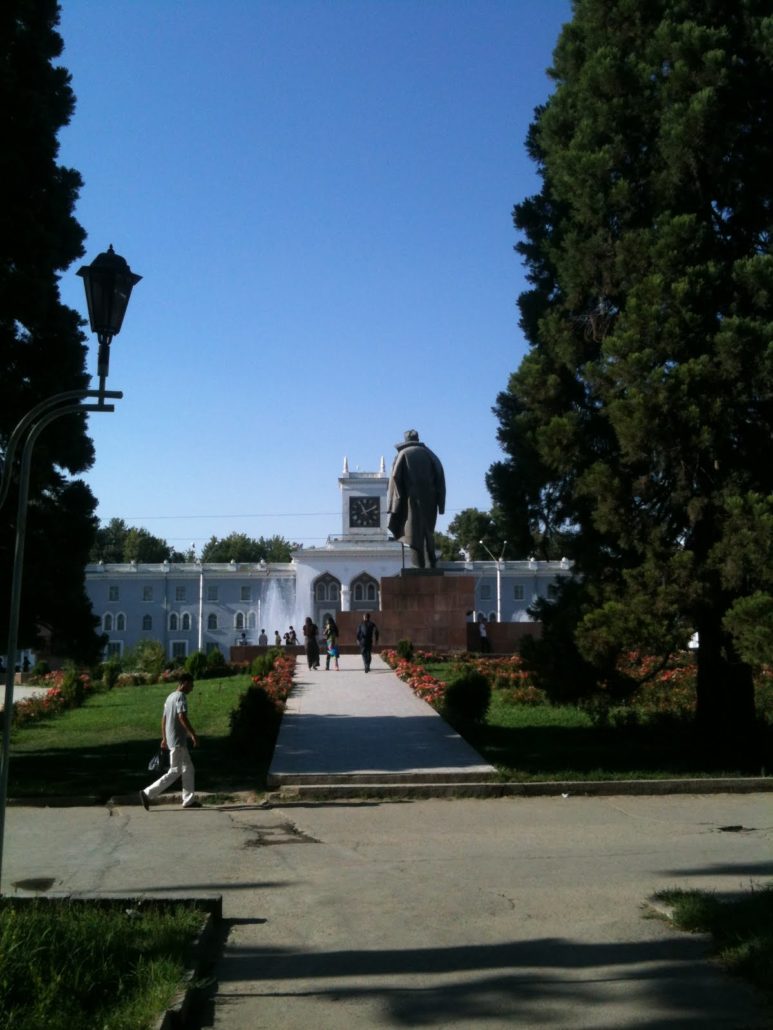
Stalinist imperial architecture, Dushanbe, Tajikistan
In the first place the political system has a mere veneer of democracy in the form of managed elections which have ensured that president Rahmon has ruled almost continuously since independence. His smiling, waving persona can be seen on larger-than-life banners on virtually every public building including schools, hospitals, town halls. In classic Soviet iconography, here he lays a brick to the claps of workers, there he receives flowers amid an abundance of children.
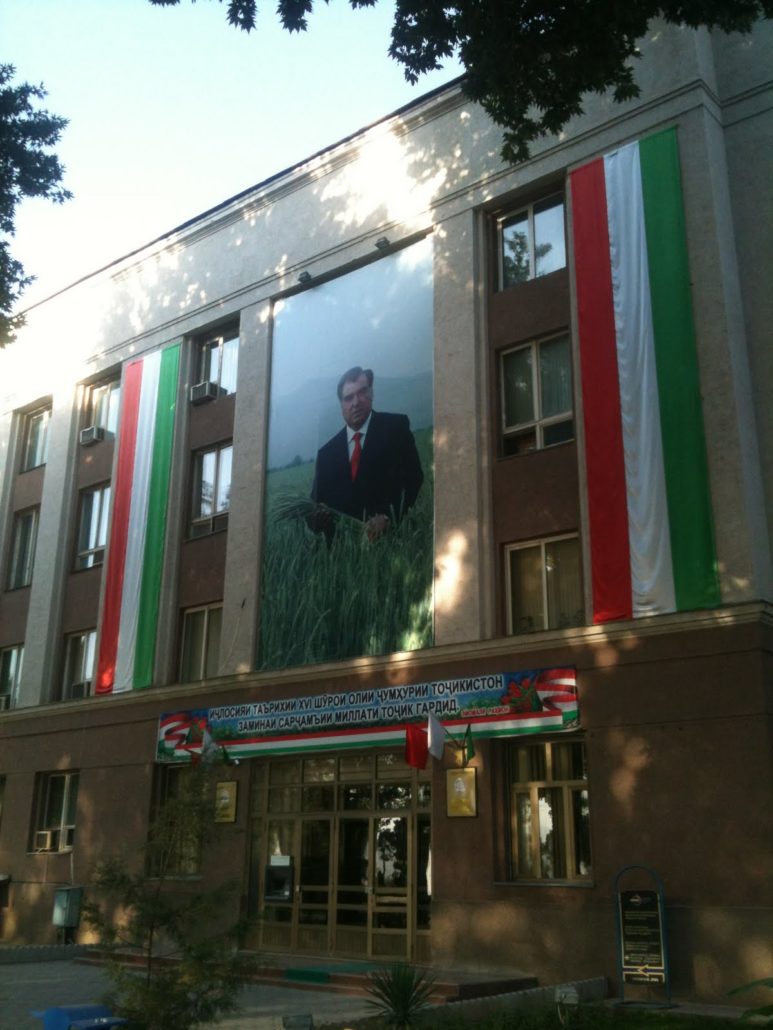
Omnipresent President Rahmon, Dushanbe, Tajikistan
While the capital Dushanbe undoubtedly feels safe, there is a large police presence on virtually every street corner, all of whom are corrupt of course. The force is grossly overstaffed and poorly paid so they supplement their income by flagging down drivers who pay them small bribes and then drive on; even in places like Moscow and Tblisi this practice has become a thing of the past.
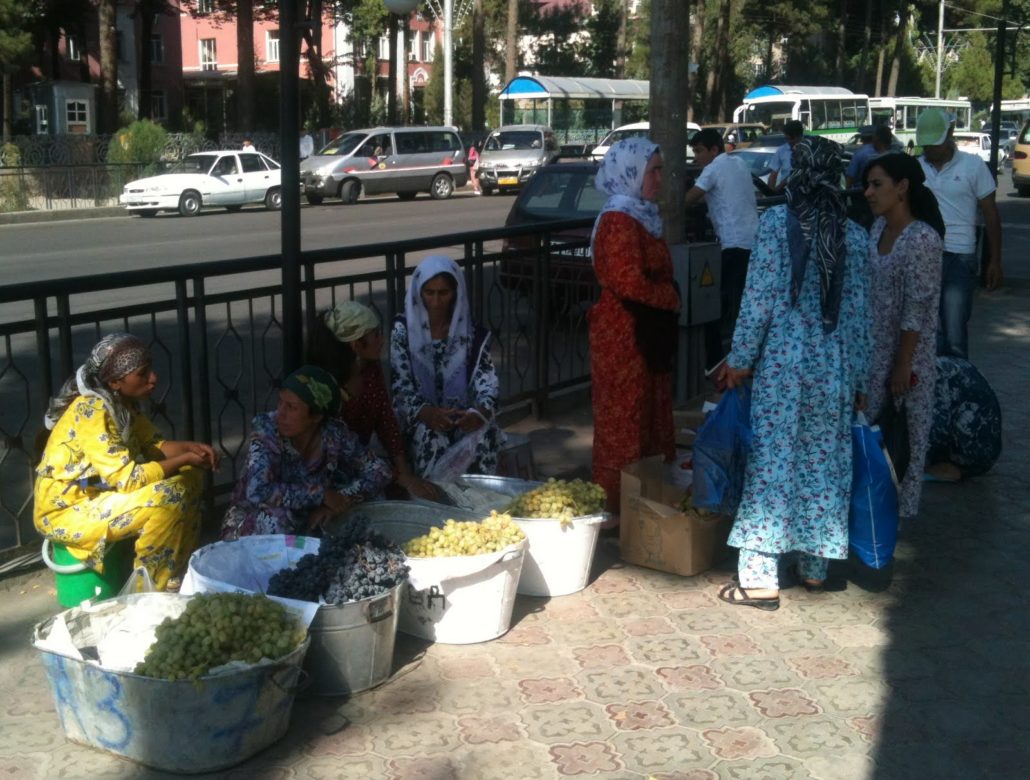
Grape sellers, Dushanbe, Tajikistan
Dushanbe itself is a complete Soviet creation; at the time of the Russian revolution in 1917 it was nothing more than a village. However the communists preferred to create a capital with absolutely no history so they could build it according to their own design and staff it with their chosen apparatchiks. The city layout is classic Soviet, with broad tree-lined boulevards, the principle street (called after Rudaki, the Tajik ‘national’ poet who was actually Persian) stretches for about 5 kms from one end of the city to the other along which all the main public buildings are arrayed including both the old and brand new presidential palaces.
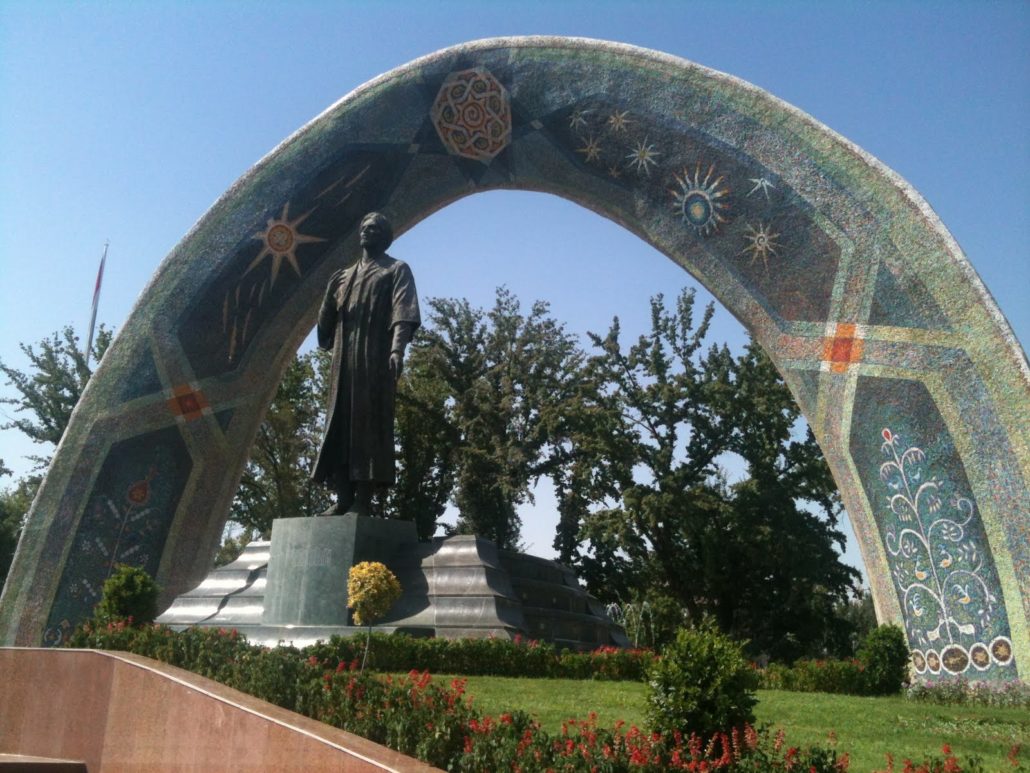
Rudaki, Tajikistan’s national poet, Dushanbe
Most of these buildings date from the Soviet period and are constructed in the ‘Stalinist imperialist’ style which is a sort of neo-neo classicism which go in for brightly painted facades in shades of turquoise, coral or mint. Of course no major soviet city could be without its opera house so here in the foothills of the Pamir Mountains, sandwiched between China and Afghanistan you can find a truly splendid specimen too. In fairness to the Soviets, they knew how to embellish their cities with large public parks and plentiful park benches where the proletariat could stroll and relax in the shade of a tree while contemplating a beautiful fountain, often topped off by a statue of one of the many great heros of the revolution.
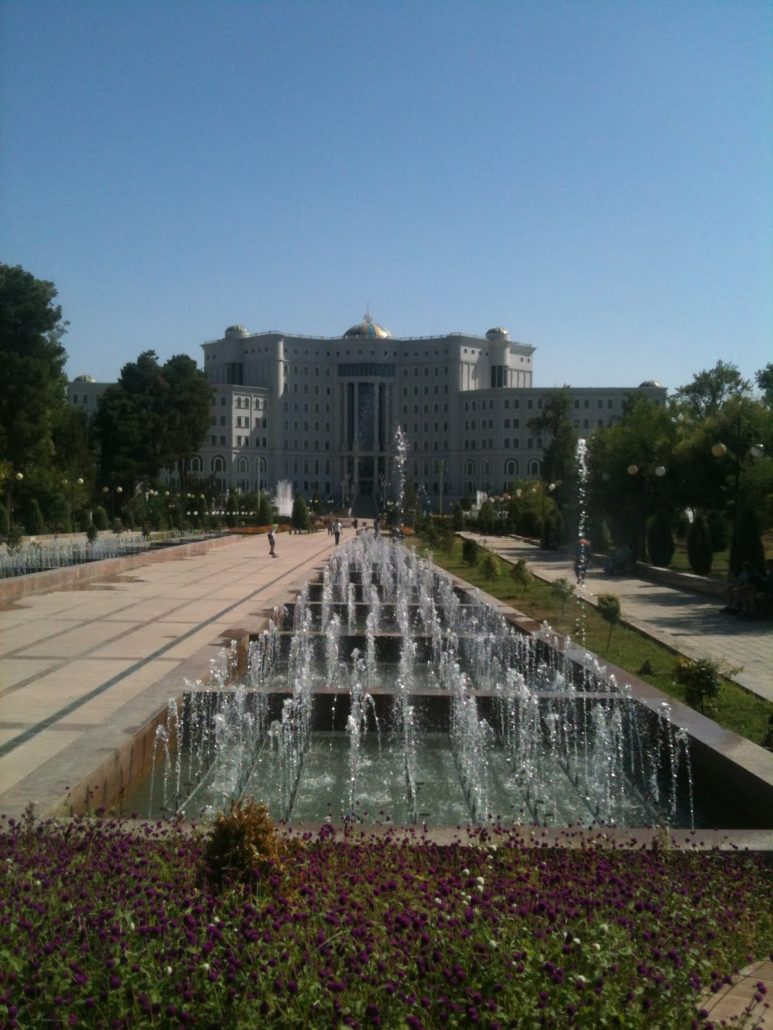
New government building, Dushanbe, Tajikistan
All of this you can find here so my two days in Dushanbe were extremely enjoyable. Apart from the constant 40 degrees of heat, albeit dry, it is a most pleasant city to stroll around if you are doing the rounds of the museums and public buildings.
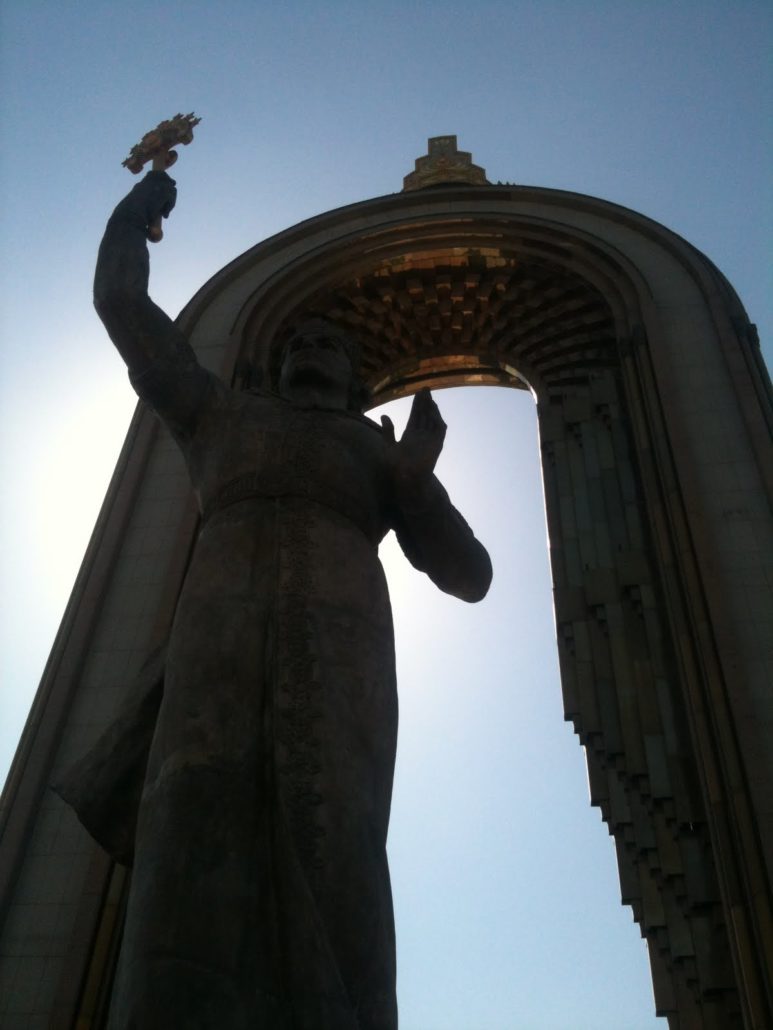
King Somon, ‘father of the Tajik nation’, Dushanbe, Tajikistan
Once you move even a block off the main Rudaki Prospekt things can become a bit grotty. my own hotel was in such a location, a mere 100m from the main street it was a spanking new kitchy building with lots of gaudy trappings but bizarrely located in the midst of poor ramshackle houses, although surrounded by a high wall to keep all this out.

Stalinist imperial architecture, Dushanbe, Tajikistan
As I had arrived in the middle of the night from Istanbul I did not pay much attention as we sped through the darkened streets, street lighting being a luxury the Tajiks cannot afford. When I was awoken in the morning by cockcrow it didnt seem strange at first until I suddenly remembered I was in the centre of a capital city. Indeed when I went exploring i discovered that not only were some of the neighbours keeping chickens in their backyard but I could distinctly smell some pigs behind one of the fences; a very Soviet experience of citizens making do and managing to get by through ingenuity.
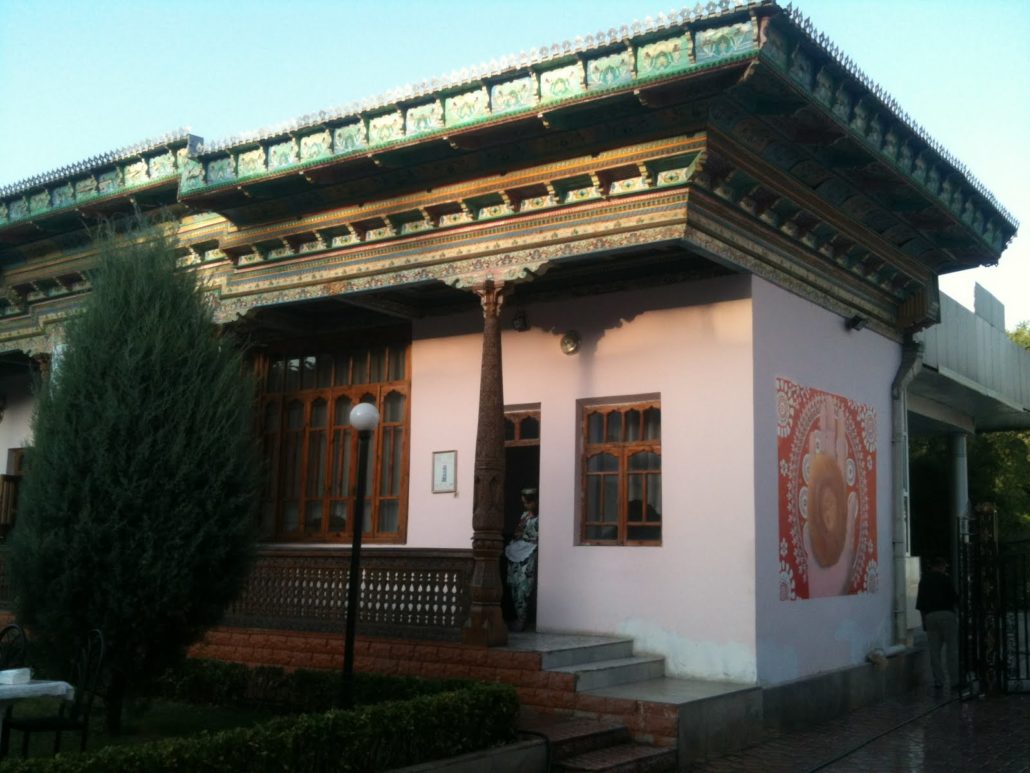
Traditional tea house (“chayxana”), Dushanbe, Tajikistan
Naturally, I did not stick just to the beautified parks and main streets but went wandering down back streets and through some of the poorer quarters. One interesting feature I came across was the traditional baking of bread at complexes of large concrete appartment blocks. The locals had build clay ovens in the garden and were baking their own bread in the way that it has been baked for thousands of years in this part of the world. When I gingerely asked some ladies who were unloading the oven if I could take their photo, they were not only delighted but insisted in giving me a couple of freshly baked loaves which were absolutely delicious!
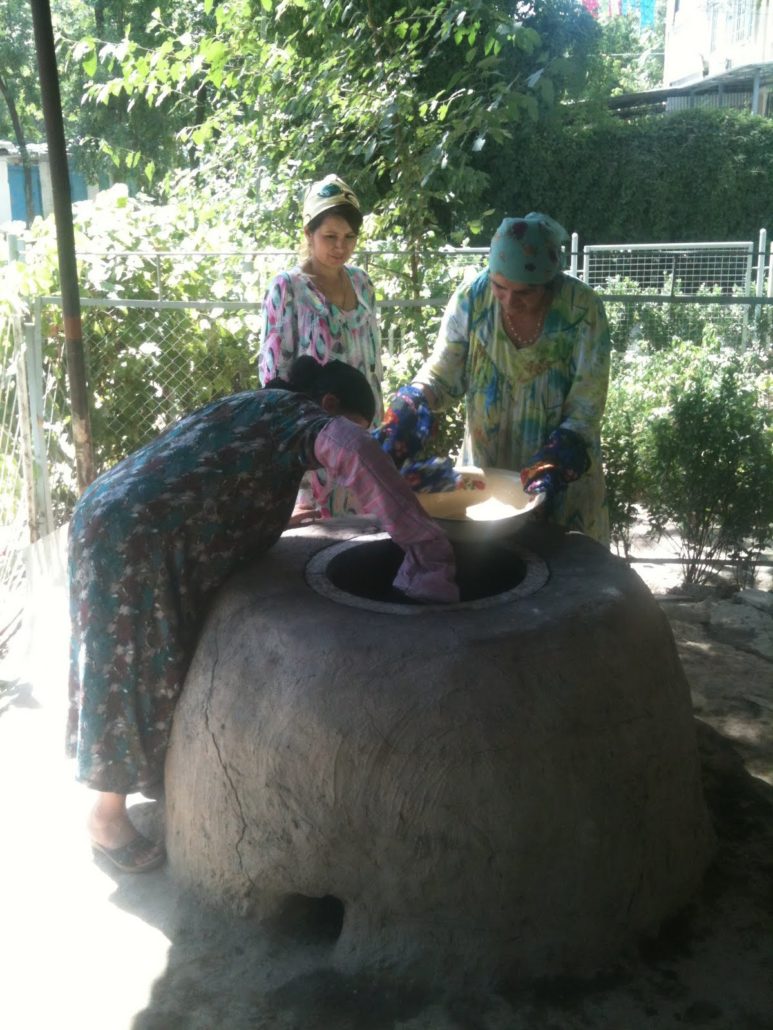
Baking bread, Dushanbe, Tajikistan
They wrapped the steaming loaves up in a large blanket and headed of for the local market to sell them. I strolled through what the locals call their ‘green bazaar’ at which you can buy far more than just fruit and vegetables, virtually every foodstuff. The bustling commercial activity is a feature of every Central Asian city going back centuries when this whole region was a crucial part of the silk road trading routes from China and India overland to Europe before the sailing routes were opened up in the 15th century.

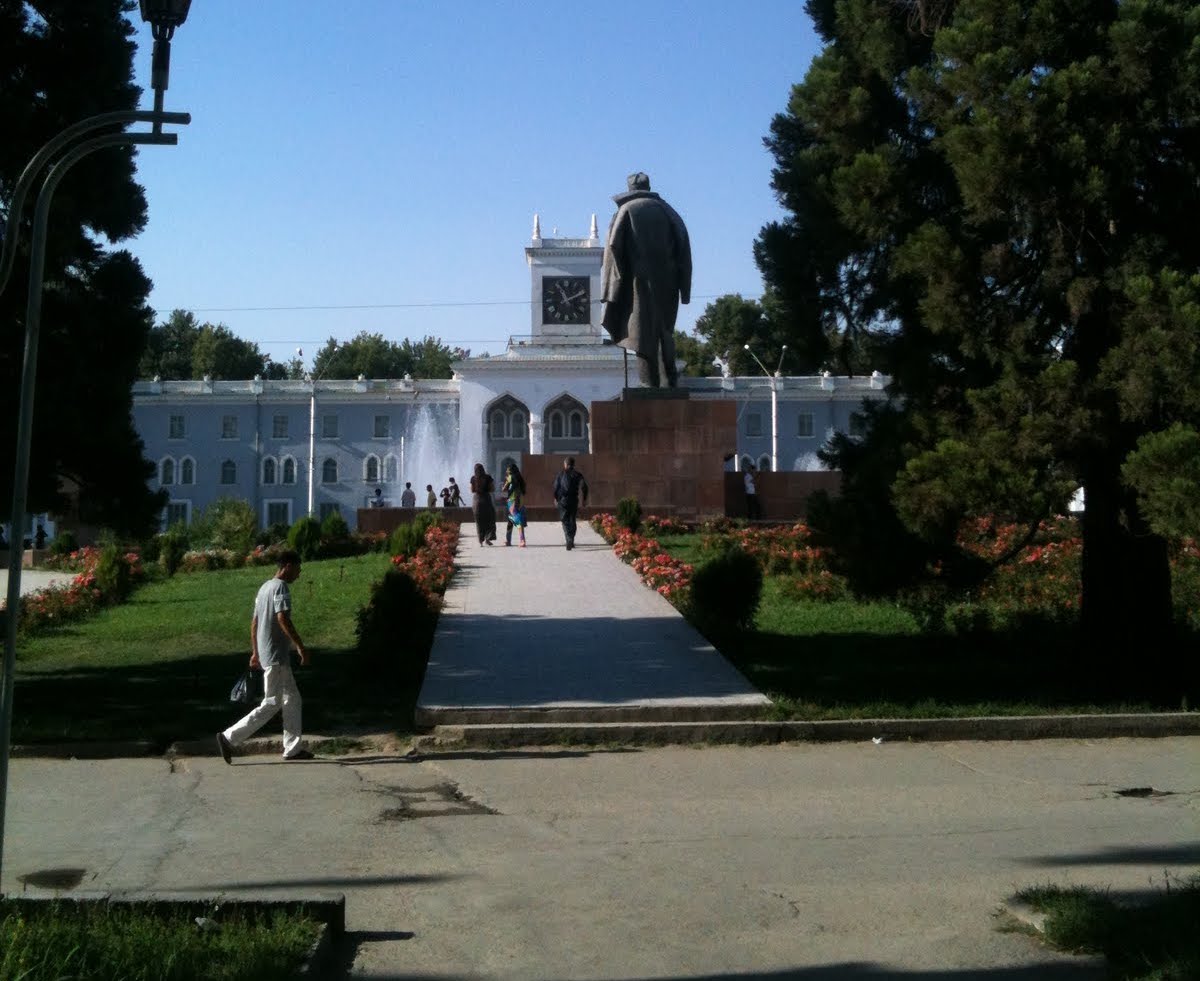



ive often wondered what dushanbe is like. it looks great actually, I think I would really enjoy visiting it! Thanks for sharing!
It does look great – looks a bit like Bishkek, actually – leafy and retro.